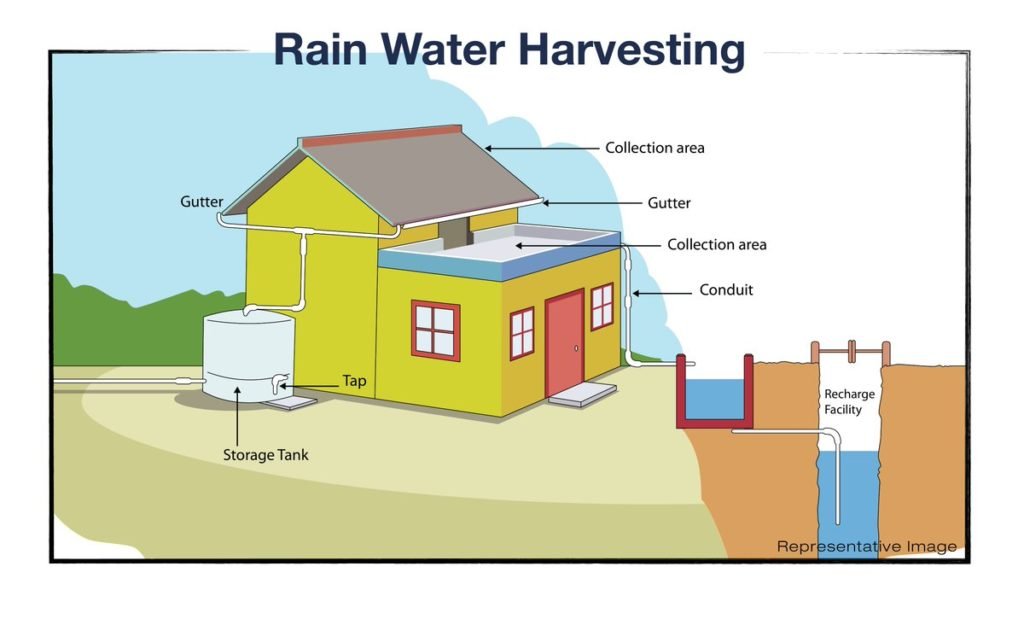Rainwater Harvesting Systems
What is a rainwater harvesting system?
A rainwater harvesting system, is a system or systems used to collect and store rainwater to help balance out nature's inconsistencies. Rainwater collection can be for personal and or commercial use. A Rainwater collection system can be a small barrel or a big tank. The rain storage containers can be simple setups to a more complex system. A system can include multiple tanks, also items such as pumps, and filters.
Brief History of Rainwater Harvesting.
Collecting rainwater isn’t a new phenomenon. the idea of harvesting rain has been around for thousands of years. In places like Africa, India, China, Mesopotamia and South America. the idea of catching rain is very ancient. Rainwater harvesting is a great way to capture rainwater for later use.
Tap water or Rainwater?
living in a modern world with “infinite” access to water, you may not know of a difference between tap water or rain water. Most gardeners know that there is a tremendous difference in using rainwater vs tap water. Rainwater can feed the soil in ways that tap water simply cannot.
Why is rainwater so much better? Have you ever noticed how much healthier your garden looks after a good rain? There are several reasons for that, from what is not present in rainwater (chemicals) to what is in there (nutrients).
The Right pH: Plants prefer water that is slightly acidic, pH from about 5.5 to 6.5, and that is what you get from your rainwater collection system. By contrast, tap water is treated to be alkaline in order to prevent pipe corrosion, which makes it more difficult for plants to uptake nutrients from the soil. Beneficial bacteria: Chlorine or chloramine are used in tap water to kill bacteria, but this can harm your growing things. Plants develop through beneficial relationships with bacteria and other organisms in the soil, which are damaged by chlorine in tap water. This is one of the reasons you see your plants do so much better after a good soaking from the rain.
Salt-free: Rainwater does not contain mineral salts that can bind up nutrients and chase growing problems with your plants. Well water and some tap water can have these kinds of salts, which can build up over time. This is a problem, and even more so in potted or container plants.
Nitrogen: And it's not just what is not there - the dissolved organic matter and nitrogen in your rain tank are just what the plants are looking for. Watering your garden with harvested rain adds micro- and macro-nutrients your plants really need to green up and thrive.
Pollinators: Bees and butterflies need water too, and just imagine how much they would prefer water that has not been treated. Try using rainwater for a pollinator watering station.
Considerations for determining what size tank is right for your system.
How big of a tank do I need? there are 3 key factors in choosing the right size tank(s).
Roof size
Water usage
Tank space
First is your roof size, a 1,000 Square Foot Roof can capture 623 gallons of water in only a 1 inch of rain. With that in mind, it can be alarming just how much water can potentially be collected from a single roof. what can be even more surprising, is just how much water the average household uses. This leads to the second factor, water usage. How much water you use or plan to use should go into consideration in your tank sizing. If you plan to irrigate the lawn, garden, wash your car and want to have some extra during less rain, then you should defiantly consider up-sizing. Lastly there is the actual space available to setup a tank. If you are still unsure and need help figuring out what can work best for your system, we can help you size your tank.
lets review a general setup from top to bottom. When it rains, water hits the roof, travels into the gutter and from there the water travels to a leaf eater (or down spout with smaller sized tanks). Leaf eaters have a screen that sheds leaves and debris, it allows water to pass through blocking mostly everything else. Water then travels form into standard PVC piping that is connected to the tank. Occasionally you'll need to clean the leaf eater screen from debris that gets stuck in it such as pine needles etc, which is fairly easily to maintain.
1st flush
there are different opinions on how much filtration needs to happen before the water gets into the tank. most people use a first flush diverter. While a lot of rainwater professionals still recommend it, the research does not support the need for a first flush. A first flush is designed to capture the very first few gallons of water off the roof. the idea is that the dirtiest water holding debris, soot etc. is flushed into the diverter then it sits there, captured into a reservoir, usually a length of pipe. the problem with that is it typically stays in that length of pipe without anywhere to go. it festers and eventually ends up in the tank anyway. So why bother? The research does not support using a first flush diverter, and we find that just using a tight screen, like the one found on the leaf eater keeps much of the debris out of the tank. Typically, with a leaf eater, a tank does not necessarily have to be cleaned or serviced for decades.





